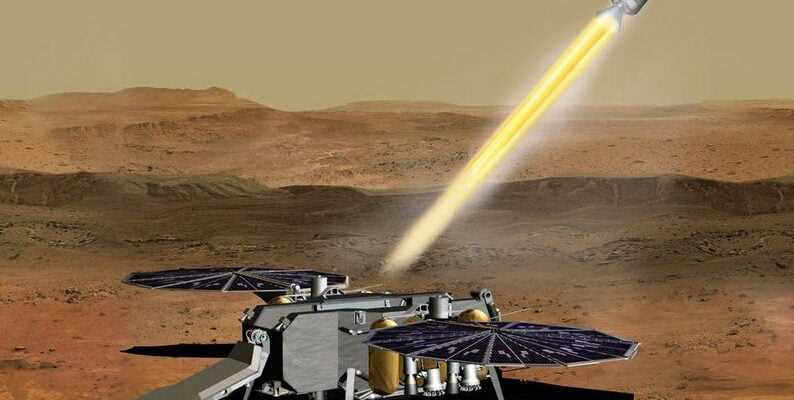Whereas Perseverance
continues its collection of samples in the Jezero crater, the American agency is working on all the missions that will be necessary to bring them back to Earth. The teams are facing several major challenges, including the take-off from March
. Lockheed Martin will be responsible for the rocket.
And the Europeans will be waiting for the samples in orbit!
Send Mars back to Earth
Mars Sample Return (MSR) is for some presented as the robotic mission of the decade. And as for the Red Planet, it’s going to showcase some of the best craftsmanship from the agencies involved.
Perseverance is already on site within the Jezero crater to collect the samples which it places in sealed tubes. For the moment stored in his crate (there are only 7 tubes used today), they will be deposited to be collected and brought back to Earth. The task will be daunting, and at NASAn the scientific teams continue to refine the concept. Lockheed Martin has been chosen to design and produce the MAV (Mars Ascent Vehicle), the small rocket that will take off with the samples to bring them into orbit.
A big technical challenge
Lockheed will work together with Northrop Grumman, already selected last year for the solid propulsion of the MAV (which will therefore use very stable powder propellants). The contract flirts with 200 million dollars (194 million) and includes, over a period of six years, several demonstrators, in addition to the flight article which will leave for Mars.
And, for this small rocket, everything is a matter of compromise: it must be powerful enough to reach orbit with the samples, but not too fragile… Conversely, it must not be too heavy either, because the platform whoever places it on the surface of Mars will be very mechanically constrained. From the loading mechanism to the design of the small capsule captured by the Europeans in orbit, everything will have to meticulously fit together. While being the first orbital liftoff from the surface of Mars…
Put all the chances on your side
For Thomas Zurbuchen, Chief Science Officer of NASA, Committing to MAV early is an important step in bringing the project to fruition and detailing the approach to not only landing on Mars, but departing from it “. The choice of industrialists is also important for ESA. The agency has already selected Airbus Defense & Space for the probe that will bring the samples from Mars to Earth. The design of the rover that will collect the samples and bring them back to the rocket is also an important step.
The mission plan is one of the most complex ever drawn up, to carry out the study of many aspects of the Jezero crater and its ancient delta in laboratories on Earth.
Source: NASA

0